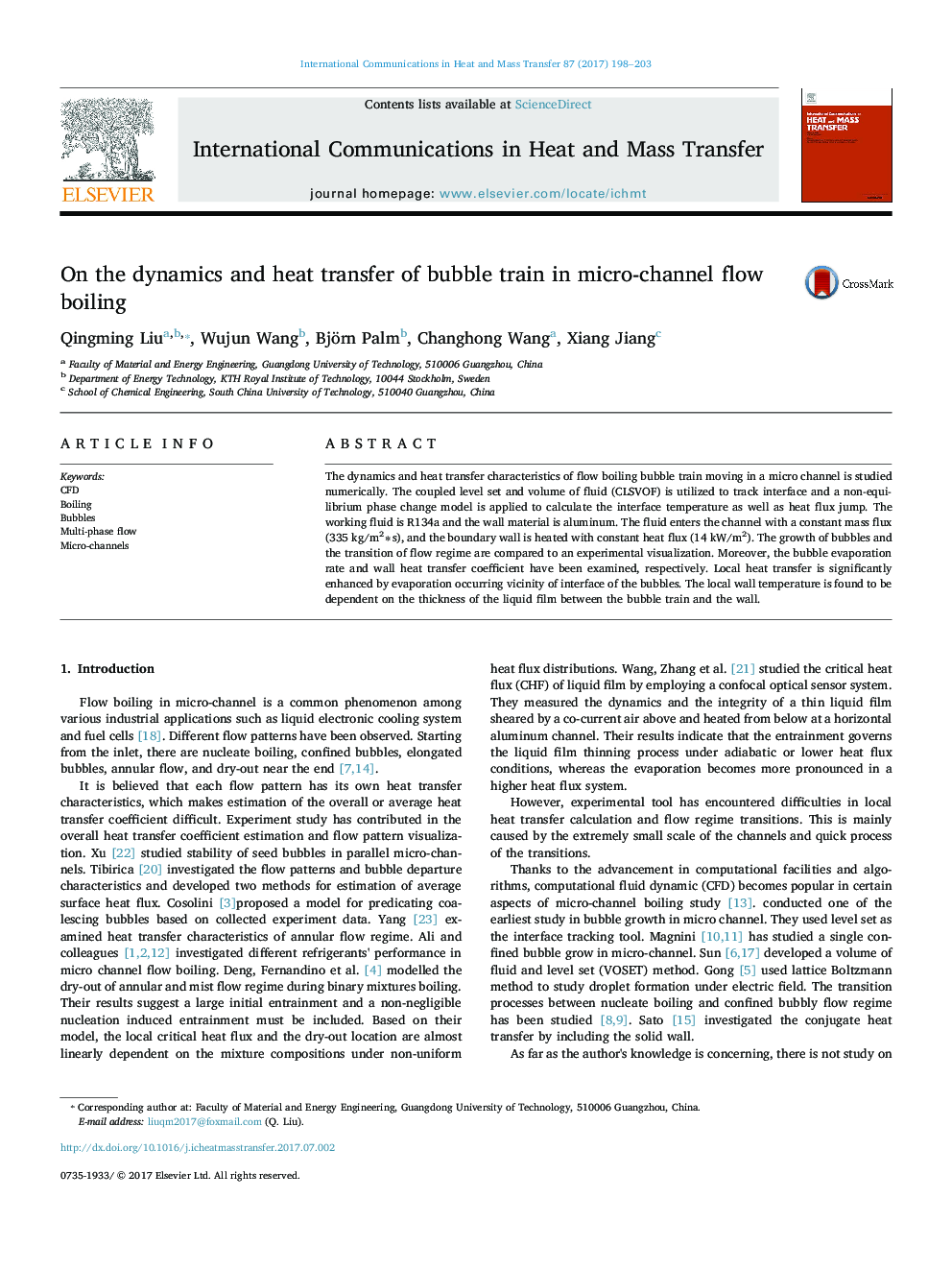| Article ID | Journal | Published Year | Pages | File Type |
|---|---|---|---|---|
| 4992828 | International Communications in Heat and Mass Transfer | 2017 | 6 Pages |
Abstract
The dynamics and heat transfer characteristics of flow boiling bubble train moving in a micro channel is studied numerically. The coupled level set and volume of fluid (CLSVOF) is utilized to track interface and a non-equilibrium phase change model is applied to calculate the interface temperature as well as heat flux jump. The working fluid is R134a and the wall material is aluminum. The fluid enters the channel with a constant mass flux (335 kg/m2 â s), and the boundary wall is heated with constant heat flux (14 kW/m2). The growth of bubbles and the transition of flow regime are compared to an experimental visualization. Moreover, the bubble evaporation rate and wall heat transfer coefficient have been examined, respectively. Local heat transfer is significantly enhanced by evaporation occurring vicinity of interface of the bubbles. The local wall temperature is found to be dependent on the thickness of the liquid film between the bubble train and the wall.
Related Topics
Physical Sciences and Engineering
Chemical Engineering
Fluid Flow and Transfer Processes
Authors
Qingming Liu, Wujun Wang, Björn Palm, Changhong Wang, Xiang Jiang,
